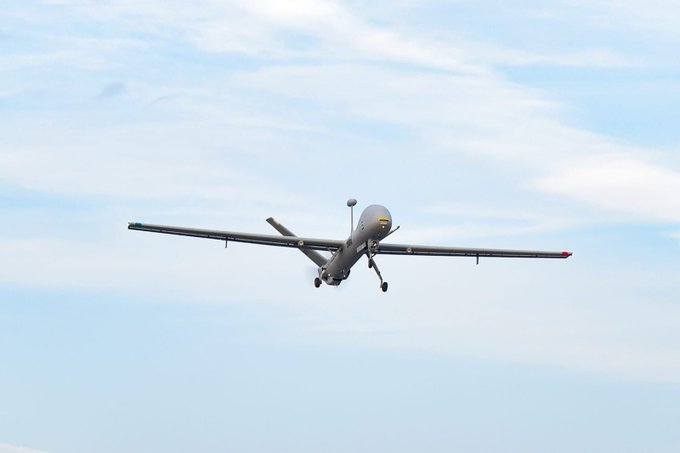SOURCE: IDRW.ORG TEAM.

The Indian Navy is gearing up to strengthen its maritime surveillance capabilities with the deployment of the indigenously-developed Drishti-10 (Hermes 900) drones. These advanced Unmanned Aerial Vehicles (UAVs) will be strategically positioned in Porbandar, Gujarat, and the Andaman and Nicobar Islands, keeping a watchful eye over the Arabian Sea and the Bay of Bengal respectively.
This deployment comes amidst a rise in drone attacks on ships in the Red Sea and Arabian Sea, highlighting the need for enhanced maritime security measures.
Strategic Significance:
- Enhanced Surveillance: The Drishti-10’s impressive range and endurance will significantly enhance the Navy’s ability to monitor critical maritime areas, deterring illegal activities, and ensuring regional security.
- Real-time Data: The drones will provide real-time data on maritime traffic, suspicious activities, and weather patterns, enabling swift decision-making by naval authorities.
- Boost to Indigenous Defense: The deployment of these indigenously-developed drones marks a significant step towards self-reliance in critical defense technologies.
Key Features of Drishti-10:
- Endurance: 36 hours, enabling extended surveillance missions.
- Payload: 450 kg, allowing for integration of various sensors and equipment.
- Range: 2,000 km, covering vast swathes of maritime territory.
- All-weather capability: Can operate effectively in diverse weather conditions.
- STANAG 4671 certification: Ensures international airworthiness standards.
Following successful user trials, the Drishti-10 drones will be officially deployed in their designated locations. This deployment will be a crucial step towards bolstering India’s maritime security architecture and contributing to regional stability.